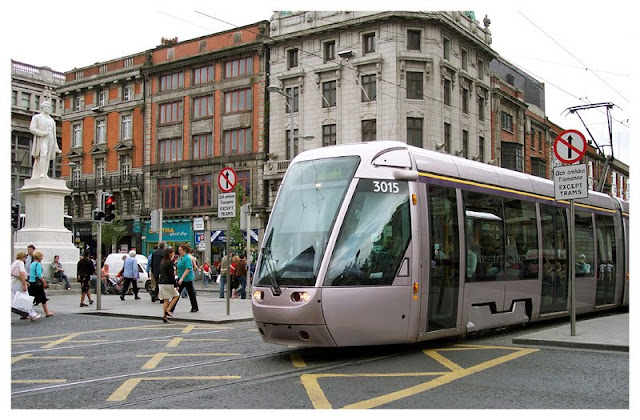The most wonderful prolonged experience in my life was six weeks I spent in St William Parish, Lancaster, Kentucky, in the summer of 1969. I was sent to study music in New Work in 1969 after finishing my studies at St Columban's College, Dalgan Park, Navan, Ireland, in 1968. We were ordained on 21 December 1967.
Before I went to the USA in September 1968 I thought I knew it, from movies, TV, novels and so on. But I found myself in a strange country, with a great variety of sub-cultures, something I enjoyed. It was also a time of turmoil in the USA because of the war in Vietnam and a time of turmoil in the Church after Vatican II. I was green from Ireland in every sense of the world and at times found things difficult.
But my three years in the USA were quite wonderful and the most significant experience of all was the time I spent working with
Father Ralph Beiting, a priest who is still serving in his 80s and who had a great gift for organising and inspiring young people from all over the USA to spent time as volunteers in his parish during their vacations.
Cliffview, now a
retreat and conference centre, was then used as a summer camp for children, black and white, nearly all of whom were poor. They would come on Monday morning and go home on Friday afternoon. I spent most of my six weeks at Cliffview and spent many hours on the pontoon boat in the photo at the top taking the children around.
I made lifelong friendships with some of the college students whom I was working with that summer.
Father Beiting had many programmes going, including door-to-door visitation in pairs just to let the people know that the Catholics were there. There were still very few in the area and also the remnants of prejuicd against Catholics based simply on ignorance. But I found the people in the area to be deeply spiritual and familiar with the Bible and, for the most part, welcoming.
There were also Bible schools during the summer to teach children the basics of our faith. Father Beiting himself use to travel all over easter Kentucky preaching at street corners and at gasoline stations. He would tak seminarians with him. On one occasion he was driven out at gunpoint. He returned next day, not to preach but simply to show himself. Gradually the people began to accept and even welcome him because he stressed the basic truths that all genuine Christians believe, even if they have deep differences about many doctrines.
Our Lady of Mount Vernon Catholic Church, Mount Vernon, Kentucky
I virst went to Lancaster for Easter Week 1969 with students from the college where I was studying. I spent Holy Week and Easter Week the following year in Mount Vernon, one of four towns in the sprawling rural parish that Father Beiting was in charge of. And I spent part of the summer of 1970 in another of the towns, Berea. There I worked with Monsignor Arthur Bukowski, who had once been president of Aquinas College, Grand Rapids, Michigan, and had worked as a missionary in a South American country.
Monsignor Arthur Bukowski
Father Art, a diocesan priest, was also an associate priest of
Madonna House, founded in Combermere, Ontario, Canada, by Catherine Doherty.
I learned the truth of that from being with Monsignor Arthur Bukowski who lived his priesthood with joy and zeal and who had a wonderully dry sense of humour. Father Ralph Beiting is a very different person but equally full of zeal for bringing the Good News of Jesus Christ to the poor in the rural USA.
On the Fourth of July, a number of which I have spent in the USA, I thank God for the many graces he gave me during my three years there before I came to the Philippines and on subsequent visits.
In the words that Irving Berlin used in writing a song that has become an unofficial anthem of Americans, God Bless America!
God Bless America, sung by Kate Smith
The USA has welcomed many to its shores. Among those were some of the very first members of the Missionary Society of St Columban, formally established on 29 June 1918, the Feast of Sts Peter and Paul. The bishop who invited us was Archbishop Jeremiah James Harty of Omaha, Nebraska. He had been the first post-Spanish Archbishop of Manila, from 1904 to 1016 when he was appointed Bishop of Omaha and succeeded in Manila by the Irish Archbishop Michael O'Doherty who not only welcomed the Columbans to the Philippines in 1929 but persuaded us to come here.
The USA is a place where God is actively present. May he continue to bless its people. I am grateful to God for the time I have spent there and especially for priests like Father Ralph Beiting and Father Art Bukowski who were great examples to me in the early days of my priesthood.


















